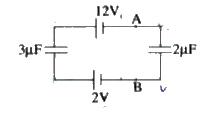The given four terminal net work is a part of larger circuit. The points A, B, C are at the same potential. The P.E. between any one of A, B or C and D is 40 V. Find the P.D. between A & O.
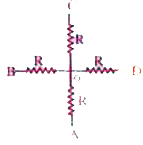
Text Solution
Potentials of points A, B and C are 40 V. Potential of D is 0V. Potential at O is V0,
Then according Kirchoff.s first law
i1+i2+i3=i4
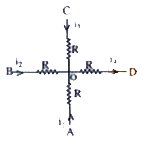
40−V0R+40−V0R+40−V0R=V0−0R
120−3V0=V0 so V0=30V VAO=10V
|
Topper's Solved these Questions
- CURRENT ELECTRICITYBOOK - AAKASH SERIESCHAPTER - CURRENT ELECTRICITYEXERCISE - EXERCISE - IA
2 Videos
- CURRENT ELECTRICITYBOOK - AAKASH SERIESCHAPTER - CURRENT ELECTRICITYEXERCISE - ADDITIONAL PRACTICE EXERCISE (LEVEL -II PRACTICE SHEET (ADVANCED) (Linked Comprehension Type Questions))
9 Videos
- CURRENT ELECTRICITYBOOK - AAKASH SERIESCHAPTER - CURRENT ELECTRICITYEXERCISE - PROBLEMS (LEVEL-II)
27 Videos
- DUAL NATURE OF RADIATION AND MATTERBOOK - AAKASH SERIESCHAPTER - DUAL NATURE OF RADIATION AND MATTEREXERCISE - PRACTICE EXERCISEX
42 Videos
Similar Questions
Knowledge Check

The p.d between the terminals A & B isA2 VB3.6 VC1.8 VD2.8Find the potential differnce between the points A and B and that between E and F of the circuit in.
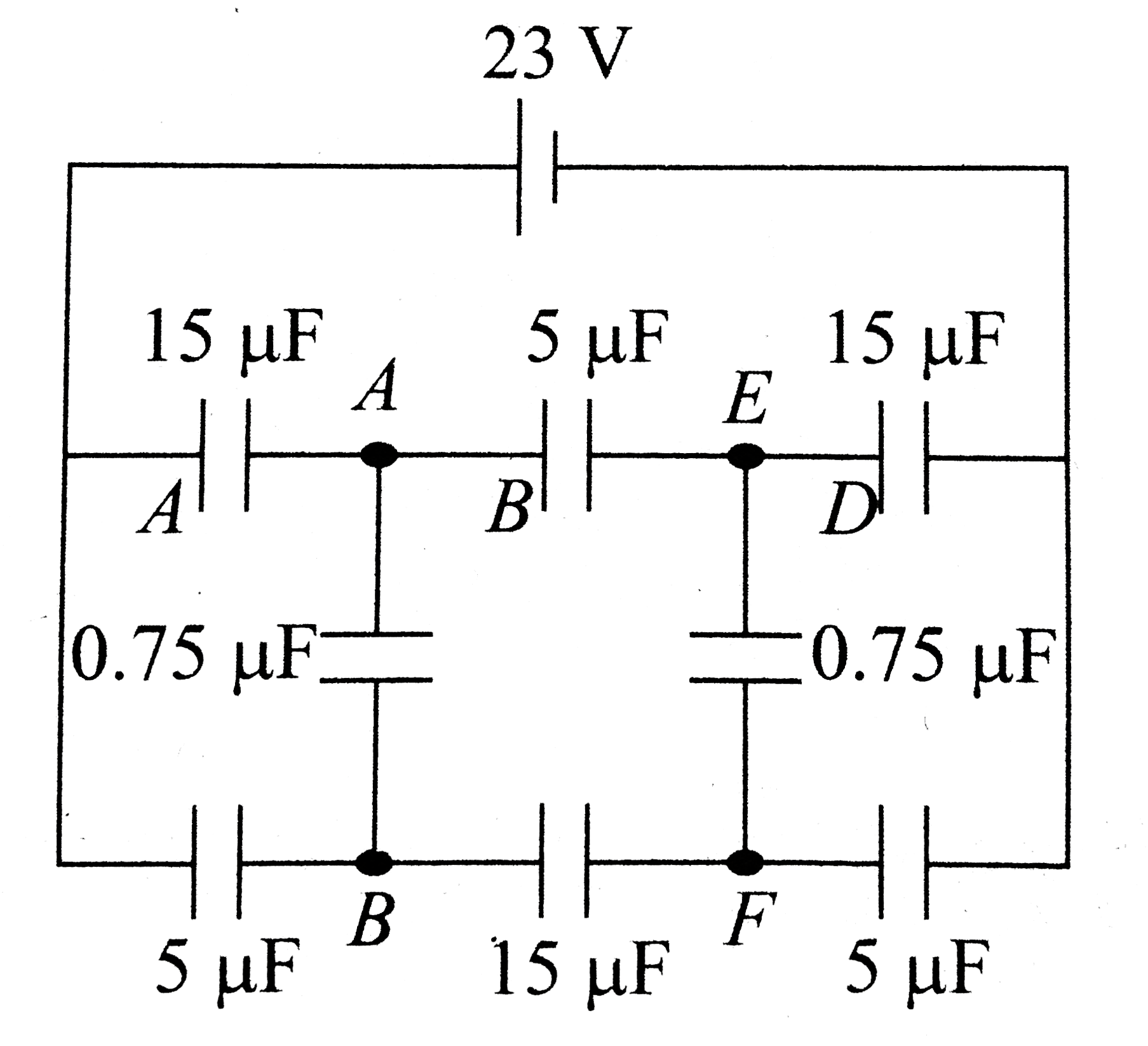 .AVAB=5VBVEF=5VCVAB=0DVEF=0
.AVAB=5VBVEF=5VCVAB=0DVEF=0
In the circuit shown, the potential differences, V1 ( between A and B ) and V2 ( between C and D ), are
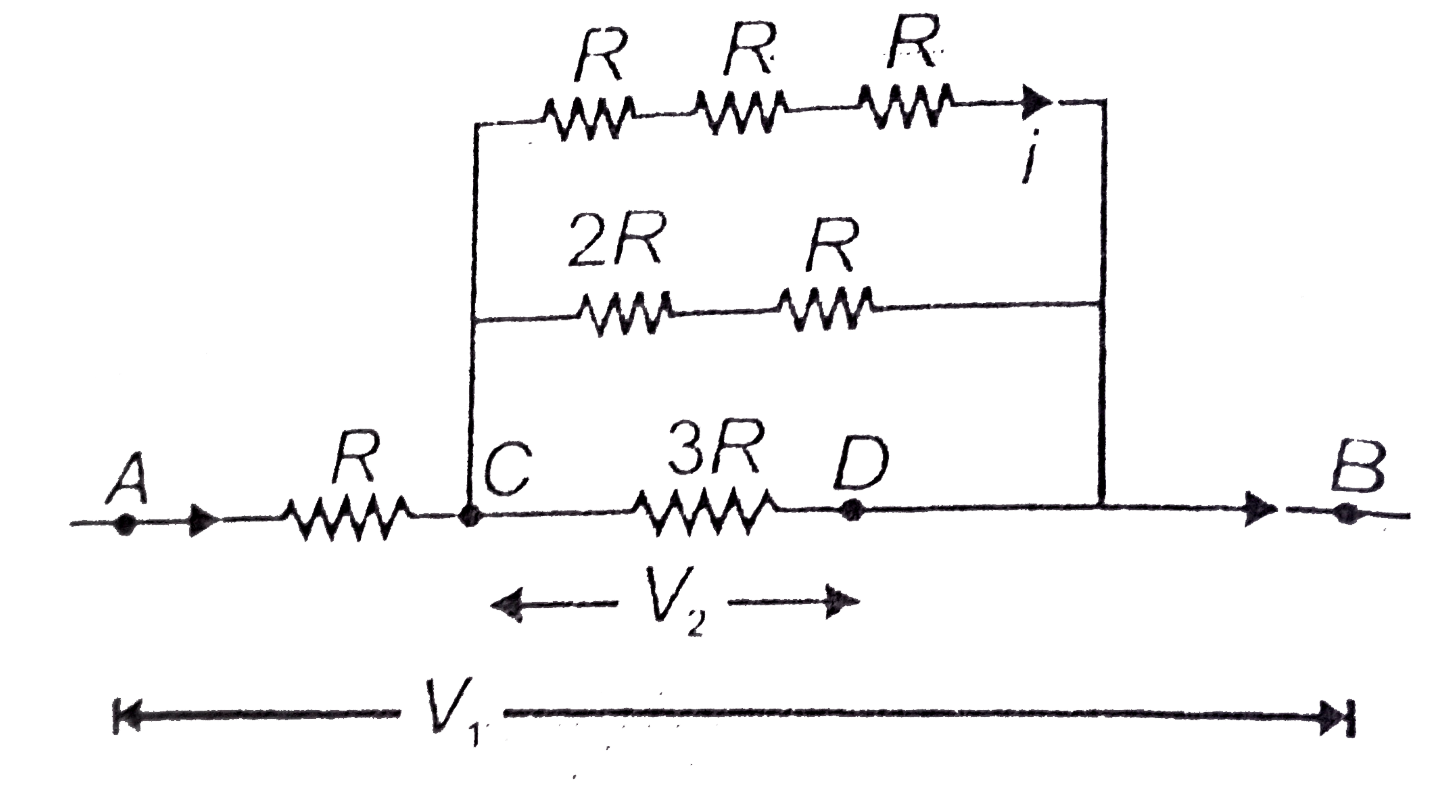
View SolutionIn the circuit shown, the potential differences, V1 ( between A and B ) and V2 ( between C and D ), are

View SolutionThe following figure shows a part of a circuit,the potential difference between C and B(VC−VB) is
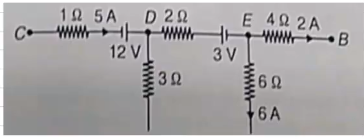
View SolutionFind the potential differnce between the points A and B and that between E and F of the circuit in.
 .
.
View SolutionFind the p.d between points A and B of ararngement shown in Fig
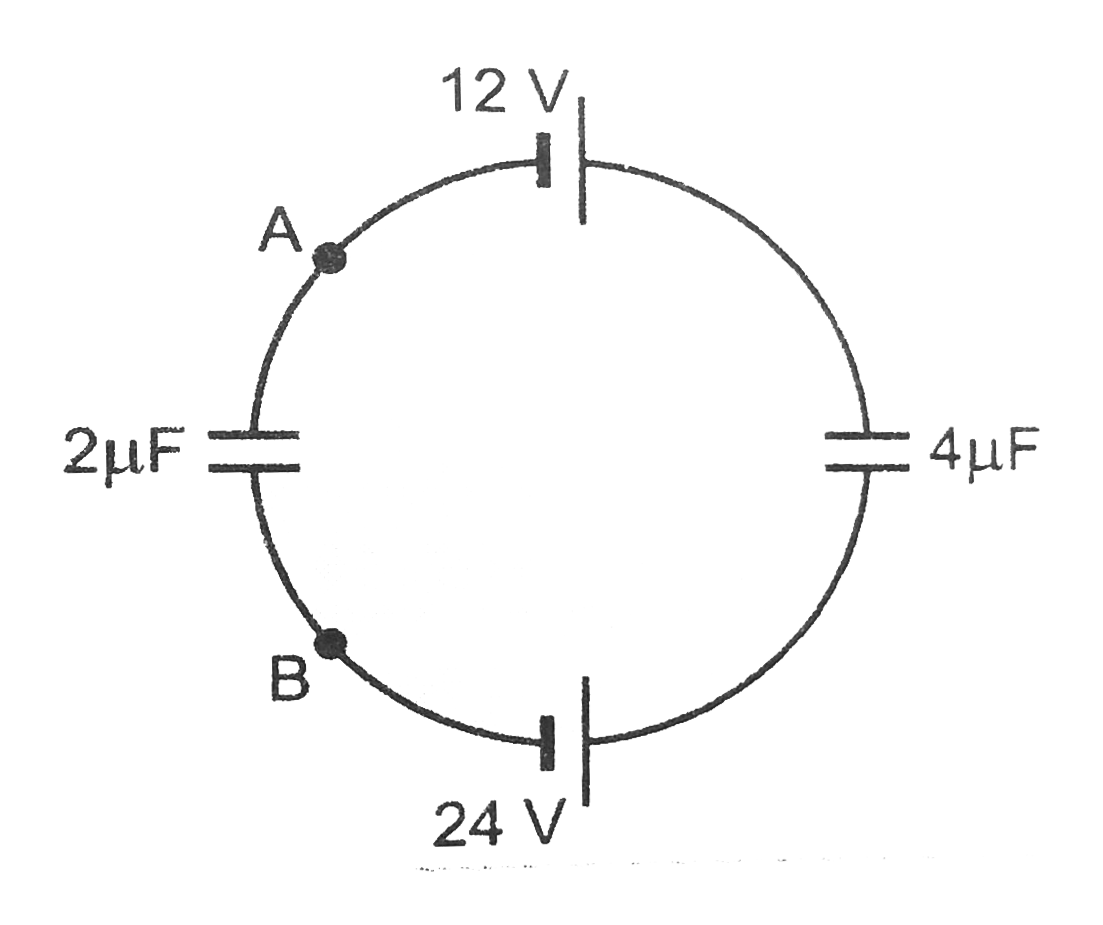
View SolutionIn the given network if potential difference between p and q is 2V and C2=3C1, find the potential difference between a & b.
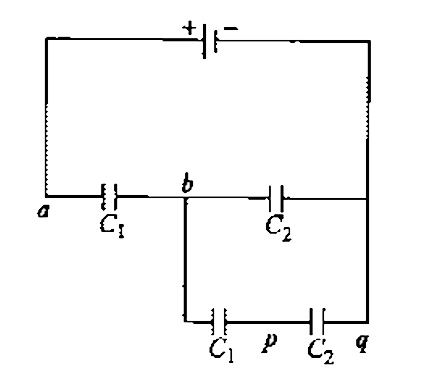
View Solution

